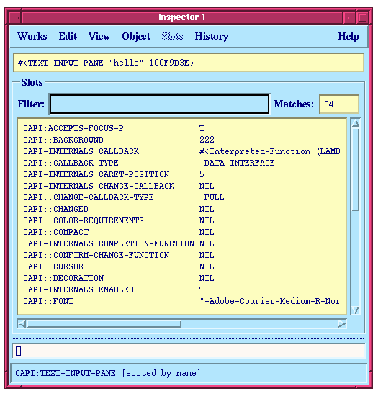*.
contain function returns the object that is being contained. You can easily inspect this object more closely in the inspector tool.
*, as shown in Figure 2.5.







2 A Short Tutorial
*,**, and*** can be used to hold the results of expressions which have been evaluated in the listener.* always holds the result of the last expression evaluated;** holds the previous value of*, and*** hold the previous value of**. These variables (* in particular) are not only useful in their own right; the environment uses them to pass values between different tools.
*.
contain function returns the object that is being contained. You can easily inspect this object more closely in the inspector tool.
*, as shown in Figure 2.5.

To keep the size of a given Lisp image small, many parts of the environment are loaded only when they are requested, rather than when the environment is started -- this behavior is known as load-on-demand. The inspector is loaded on demand, so you may notice a slight delay after you choose the menu command before the tool appears.
The commands in the Values menu always act upon the current value of*. This enables you to pass a value easily from any tool to any other. Similar menus can be found in all tools in the environment, and the behavior of each command is consistent throughout the environment. For a full description of the functionality of these menus, see Section 3.8 on page 43.
The main part of the inspector is a list of all the slots available in the object being inspected. This list shows both the name of each slot and its current value. Above this list is an area called the Filter area. This lets you filter the information shown in the main list, which can be useful when you are inspecting objects with a large number of slots. The name of the object being inspected appears immediately below the menu bar.
text and then press Return.
hello has been deleted. Typegoodbye and press Return.






Generated with Harlequin WebMaker